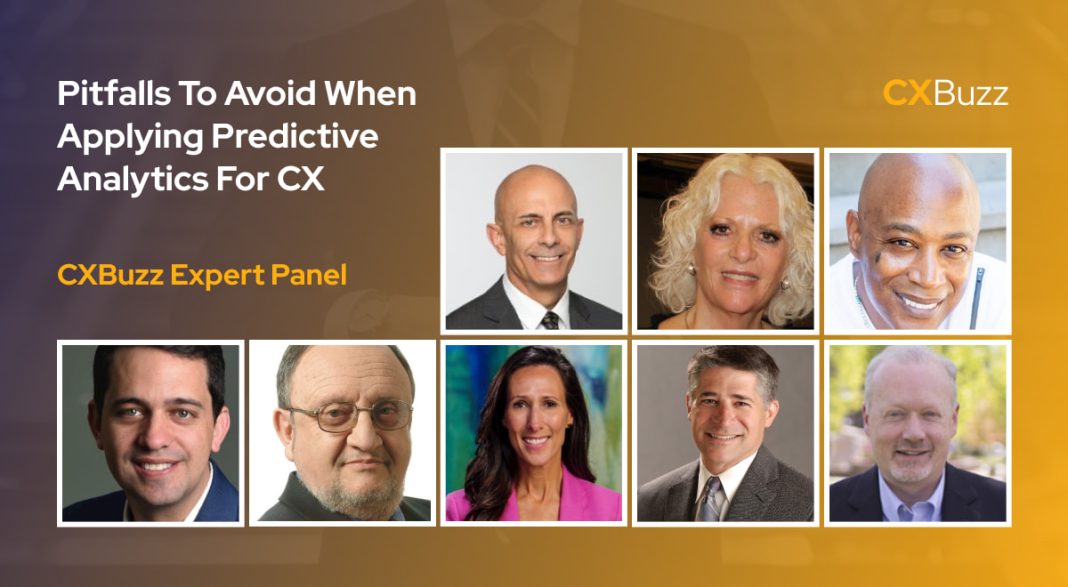The best cure is prevention, or so the saying goes. This holds true for areas like customer experience too, with predictive analytics being one of the best tools available to brands. By measuring and tracking the data of customer behaviors, companies can be quick to proactively cater to customers’ needs; often getting ahead before those needs even arise, making for an updated and streamlined experience with satisfied customers.
But tracking trends and predicting patterns comes with its own risk — how to use the data effectively, and before that, what data to use? With the variety of information that can be collected, it’s important to be able to filter truly helpful information and avoid getting lost in a multitude of possibilities. Here at CXBuzz, we asked our experts on the pitfalls to avoid when applying predictive analytics to gathered CX data.
Peter Armaly, Senior Director and Customer Success Enablement at Oracle
One of the typical ways CX-focused organizations trip up when building predictive analytics capabilities is in not securing enough buy-in and consensus with all the organizations that need to be involved in order to execute the actions that will flow from the predictive models.
Too often, predictive analytics will begin as a skunk works project within one organization and the product (model) they develop will evolve to a decent level of sophistication before being revealed to senior managers. At that point, the organization has invested a considerable amount of time and energy into its creation and might not be ready, or in the right frame of mind, to face the inevitable deep questioning about the model and its logic that will come from peer organizations whose work will be affected if the model were to ever make it into production status. If the model makes it past serious opposition or debate and into production, or there was no serious scrutiny of it by groups that were uninvolved but are affected, then it might not produce the sort of benefits that its creators and leadership envisioned.
Do the hard work. Share the details and involve other parties that need to be on board.
Michael Creal, Market Unit Leader, CE&X NA CX Customer Success – Emerging Segment, SAP America Inc.
One should never assume that your initial CX monitoring “setup” and associated algorithms are 100% correct and/or static.
More specifically, cumulative data and periodic/dynamic updates (i.e. automated) are not only key, but essential in ensuring that “right” measures and/or actions are being taken as a result. As well, soliciting and receiving 360-degree customer feedback (both internal & external) via survey tools/mechanisms.
It is my opinion that predictive or otherwise “proactive” analytics are only as strong as the corrective actions and/or levers put in place as a result of interpreting the reports made available (i.e. getting in front of an issue and/or concern before it happens?!?). In closing, one must always keep in mind that heavily relying on this ‘predictive’ aspect, may lead to false positives – if not married to real-time & targeted customer feedback. Always placing customers at the center of this … can surely realize measurable results/answers (i.e. think Abandon Carts – why?).
Guilherme Tavares, CEO at Toccato
Predictive analytics shows us linear, non-scalable and potential thinking. When we look in the rearview mirror to advance in the predictive market, we generate a clear limit on our potential growth. This is the first point to be concerned about. Furthermore, it is necessary to understand that behavioral changes and consumer demands are rarely transcribed into algorithms, as there are behaviors that are not measurable, with no clear data available.
Raz Heiferman, Senior Digital Transformation Advisor at BDO Israel
Predictive analytics is heavily dependent on the past and quality of the data the company gathers. Companies that want to use predictive models must invest in cleansing their data and making sure that the data is of high quality and consistency.
Charlene Foley, Chief Customer Officer at Hearful
My answer is quite simple. If you aren’t confident in your data, then DON’T do it. It is worse to get it wrong, than to err on still building your member/customer data and wait to get it right. This is especially true if you are doing outbound engagement on your predictive analytics. Test first and use a focus group or customer sample to help validate accuracy.
Ed Powers, Principal Consultant at Service Excellence Partners
One mistake I see CX and data science professionals frequently make is assuming they already have the data they need to build predictive models. This comes from a cognitive bias that behavioral economist Daniel Kahneman calls WYSIATI (“What You See Is All There Is”) – if we can’t easily recall something, then it may as well not even exist. To counteract the effect, use the Scientific Method. Start by asking a question, THEN collect data to test your hypothesis. You’ll overcome your natural blind spots and build more predictive models.
Mike Moran, Chief Product Officer at SoloSegment
The biggest mistake I see is that companies assume that human beings are the only way to take action on the predictions. It’s not that people don’t know that Amazon automatically serve up product recommendations, for example, but somehow, they think Amazon is in a different class – some unattainable state they just get envious thinking about. Instead, the value of predictive analytics depends on how those predictions are scaled and how quickly they are used. If you’re not thinking about how to automate your actions based on your predictive analytics, you are missing the biggest value they can provide.
Sharon-Drew Morgen, Author and Owner of Morgen Facilitations, Inc.
There are several problems when applying predictive analytics, starting with the data set companies work from. I’ve never met a company that poses good questions that provide the foundational data set! They seem to be biased according to the needs and presuppositions of the company, with little relevance to customers. Obviously, this skewers analytics and outreach modalities, not to mention annoying customers and providing companies with less-than-ideal data. But the biggest problem is that these tools miss the larger point: they’re asking the wrong people for data (not asking their own field reps who have great data points companies should use), and they’re not using their touch points and outreach to gather truly relevant data to truly serve customers.
Stay tuned for more expert panels on CXBuzz!






